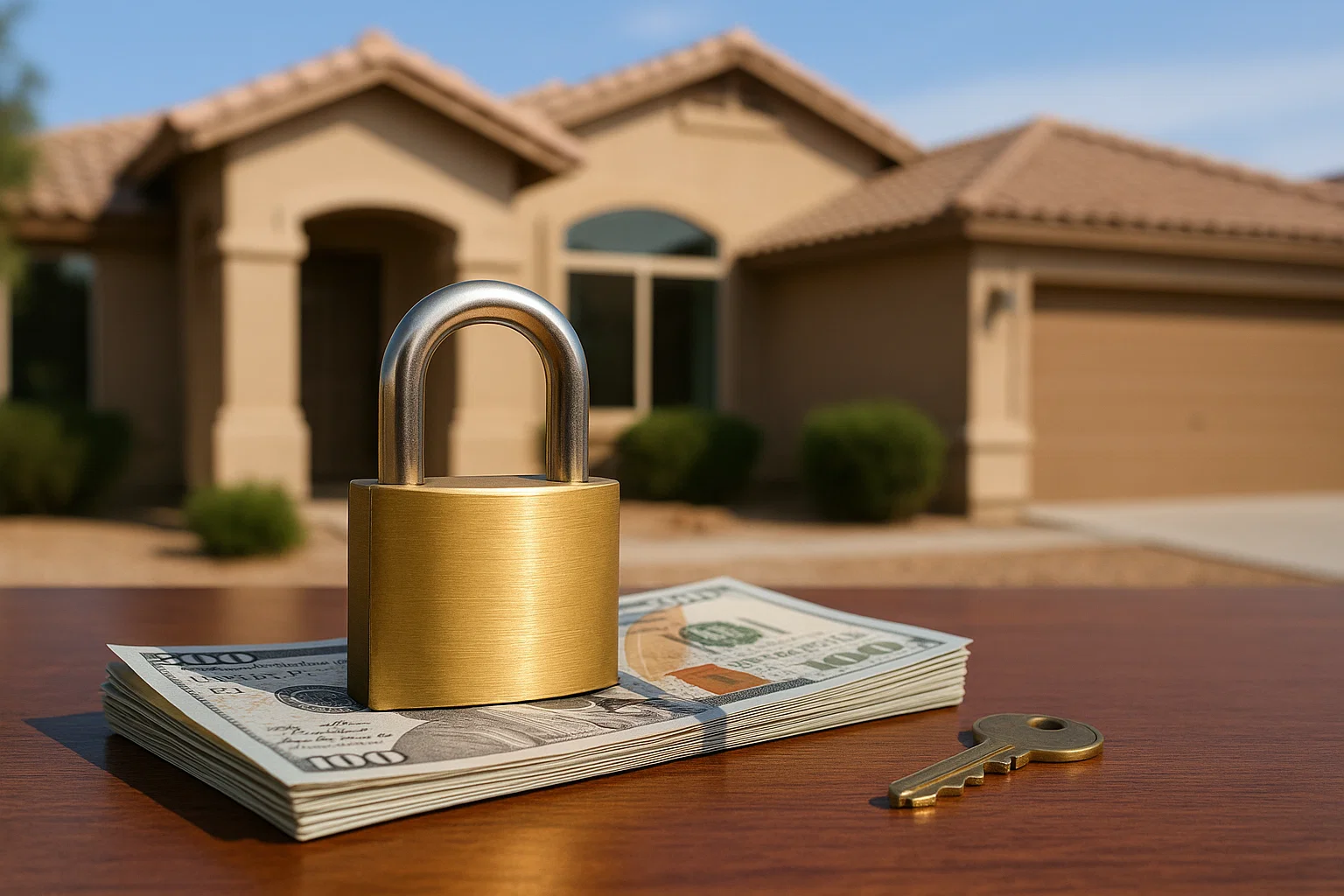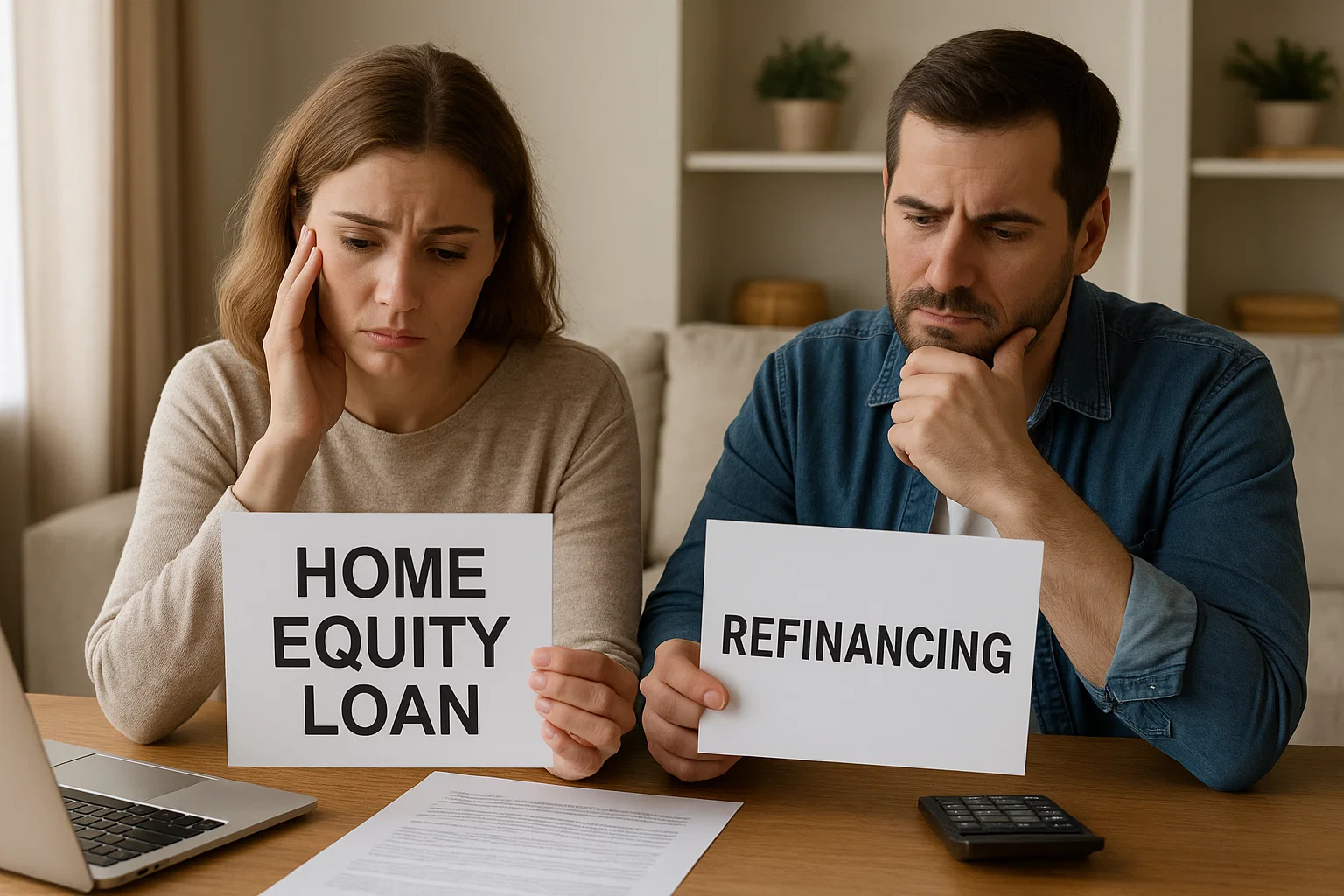Understanding Home Loan Refinancing: How Soon Can You Refinance a Home Loan for Savings?
November 19, 2025
Wondering how soon can you refinance a home loan? Learn about timelines for conventional, FHA, VA, and other loan types to save money.

Thinking about refinancing your home loan not long after you got it? It's a question many homeowners ask, especially when interest rates start doing their usual dance. You might be wondering, 'how soon can you refinance a home loan?' The answer isn't a simple one-size-fits-all. It really depends on the kind of loan you have and what you're hoping to achieve with the refinance. Let's break down the timelines and what you need to know before you jump in.
Key Takeaways
- For most conventional mortgages, you can refinance as soon as 30 days after closing, but some lenders might prefer you wait a bit longer, often around six months, especially for cash-out refinances.
- Government-backed loans like FHA and VA have specific 'seasoning' periods, meaning you usually need to wait a certain amount of time (like 7 months for FHA streamline or 6 months/210 days for VA IRRRL) before you can refinance.
- Refinancing too soon can sometimes mean you haven't built up enough equity for a cash-out refinance, or you might encounter prepayment penalties depending on your original loan terms.
- Reasons to refinance sooner rather than later include a significant drop in interest rates, a big improvement in your credit score, or a major life event that changes your financial situation.
- Always check your specific loan documents and talk to your lender to understand any restrictions, potential costs, and the exact waiting periods that apply to your home loan before deciding to refinance.
Understanding Refinance Timelines
So, you're thinking about refinancing your mortgage. That's great! It can be a smart move to save money or adjust your loan terms. But how soon after you get your current mortgage can you actually start the refinancing process? It's not always an immediate "yes." The timeline often depends on the type of loan you have and the specific kind of refinance you're aiming for. Some loans have what the industry calls "seasoning" requirements, which basically means you have to hold onto the loan for a certain period before you can refinance it. It’s like a waiting period to prove you can handle the payments.
Conventional Mortgage Refinancing Availability
With a conventional mortgage, which isn't backed by the government, you often have more flexibility. In many cases, you can refinance pretty quickly after closing on your original loan, sometimes in as little as 30 days. However, this isn't a hard and fast rule for everyone. Lenders can have their own policies, and it's always a good idea to check your specific loan contract. If you're looking to do a cash-out refinance on a conventional loan, you'll typically need to have made at least 12 on-time payments. This applies to loans that are eligible for purchase by Fannie Mae and Freddie Mac.
Government-Backed Loan Seasoning Requirements
Government-backed loans, like those from the FHA, VA, and USDA, usually come with specific seasoning periods. These are designed to ensure borrowers have a track record of making payments. For example:
- FHA Loans: You can usually apply for an FHA Streamline Refinance about seven months after your original loan closed. You'll need to have made at least six on-time monthly payments.
- VA Loans: If you have a VA loan, you generally need to wait at least 210 days after your first payment, or until you've made six payments (whichever is longer), before you can refinance. This applies to both rate-reduction and cash-out refinances.
- USDA Loans: For USDA loans, requirements vary slightly depending on the refinance program, but generally, you need to be current on your payments for the last 180 days, or even the last 12 months for certain streamlined options.
It's important to remember that these are general guidelines. Your specific loan servicer or lender might have slightly different rules, so always confirm the details of your mortgage.
Lender-Specific Refinance Policies
Beyond the general rules for loan types, individual lenders can also set their own policies regarding when you can refinance. Some might have stricter waiting periods than the standard requirements, while others might be more lenient. This is especially true for jumbo loans, which exceed the limits set by Fannie Mae and Freddie Mac. Since lenders hold these loans themselves, they often have their own underwriting criteria and timelines. Always review your loan documents or speak directly with your lender to understand their specific requirements before you start the refinance process.
When Can You Refinance for Financial Benefits?
So, you're thinking about refinancing your mortgage. That's great! It can be a smart move, but when does it actually make financial sense? It's not just about getting a new loan; it's about improving your financial situation. Let's break down the main reasons people refinance and when it's most likely to pay off.
Securing a Lower Interest Rate
This is probably the most common reason folks refinance. If market interest rates have dropped since you got your original mortgage, you might be able to snag a lower rate. This can save you a significant amount of money over the life of your loan. Imagine paying less each month just because the general cost of borrowing money went down. It's like finding a sale on something you buy regularly. You'll want to compare your current rate to the new ones available. If the new rate is noticeably lower, it's definitely worth looking into. Just remember to factor in the costs of refinancing to make sure the savings outweigh them. You can check today’s refinance offers to see what's out there.
Reducing Monthly Payment Obligations
Sometimes, even if the interest rate doesn't drop dramatically, refinancing can still help lower your monthly payments. This could happen if you extend the loan term (like going from a 15-year to a 30-year mortgage), though this means you'll pay more interest overall. Or, if your credit score has improved, you might qualify for a better rate that lowers your payment. A lower monthly payment can free up cash flow, making it easier to manage your budget or handle unexpected expenses. It can also be a lifesaver if you're facing financial strain.
Eliminating Private Mortgage Insurance
If you put down less than 20% when you bought your home, you likely have to pay Private Mortgage Insurance (PMI). This protects the lender, not you. Refinancing can be a way to get rid of PMI, especially if your home's value has increased or you've paid down enough of the principal. Once you have enough equity (typically 20% or more), you can refinance into a new loan without PMI, which directly reduces your monthly housing cost. It's a nice chunk of change to get back in your pocket each month.
Refinancing isn't always a slam dunk. You need to do the math. Consider all the fees involved – appraisal, title insurance, origination fees, and so on. If it takes you years to break even on those costs, it might not be the best move right now. Always calculate your break-even point before you commit.
Specific Refinance Scenarios and Waiting Periods

Cash-Out Refinance Timelines
So, you're thinking about pulling some cash out of your home equity? That's a pretty common reason people refinance. But here's the catch: you usually can't just do it the day after you close on your original mortgage. For most conventional loans, you'll need to have owned the home for at least 12 months before you can do a cash-out refinance. This rule is pretty standard, set by entities like Fannie Mae and Freddie Mac, to make sure you've got some skin in the game and aren't just flipping the property immediately. There are a few exceptions, like if you inherited the home or got it through a divorce, but generally, plan on waiting a year.
Refinancing After a Mortgage Modification
If you've gone through a mortgage modification because you were having trouble making payments, refinancing can seem like a good idea once things stabilize. However, lenders want to see that you can consistently handle the new terms. Typically, you'll need to wait between 12 and 24 months from the date of your modification before you can refinance. This waiting period shows a track record of on-time payments under the modified loan terms.
FHA Streamline Refinance Eligibility
For those with FHA loans, the "Streamline Refinance" option is a bit different and often quicker. You might be able to apply for this type of refinance as soon as seven months (that's about 210 days) after you closed on your original FHA loan. The big perk here is that it usually skips the appraisal and doesn't require as much income documentation. It's designed to make it easier to switch from one FHA loan to another, especially if you're just looking to get a better interest rate or term. Just remember, you still need to have made your payments on time.
Here's a quick rundown of common waiting periods:
- Conventional Cash-Out Refinance: Generally 12 months of homeownership.
- Mortgage Modification Refinance: Typically 12-24 months after the modification date.
- FHA Streamline Refinance: As early as 7 months after closing.
It's always a good idea to check your specific loan documents or talk to your lender. They can tell you exactly what their requirements are, as sometimes individual lenders have their own rules on top of the general guidelines.
Reasons to Consider Refinancing Sooner Rather Than Later
Sometimes, waiting to refinance your mortgage just doesn't make sense. Life happens, and so do changes in the economy. If you find yourself in a situation where refinancing could really help your finances, it's worth looking into, even if it hasn't been that long since you got your original loan. Don't just assume you have to wait a set number of years.
Changes in Interest Rate Environment
Mortgage rates can swing quite a bit. If you bought your home when rates were on the higher side, and then they drop significantly, refinancing could save you a good chunk of change over the life of your loan. It's like finding a great sale after you've already bought something – you might want to "return" the old, more expensive version and "buy" the new, cheaper one.
- A lower interest rate means lower monthly payments. This frees up cash for other things.
- You'll pay less interest overall. Over 15 or 30 years, this adds up.
- It can help you switch from an adjustable-rate mortgage (ARM) to a fixed-rate loan. This gives you payment stability, which is great for budgeting.
The key here is to watch the market. If rates dip enough, the savings from refinancing could easily outweigh the costs involved in the process, even if you're just a year or two into your current mortgage.
Improvements in Creditworthiness
Your credit score and financial picture can change after you get your mortgage. Maybe you paid off some old debts, or your income increased. If your credit score has gone up since you first applied for your loan, you might now qualify for better interest rates or loan terms than you did before. Lenders look at your creditworthiness when deciding what rate to offer you, so a better score can mean a better deal.
Addressing Life Event Changes
Major life events can really shake up your financial situation and your housing needs. Refinancing can be a tool to help you adjust.
- Divorce or Separation: If you're going through a divorce, you might need to refinance to remove a spouse from the mortgage or to buy out their share of the equity.
- Marriage: If you're getting married and want to add your new spouse to the mortgage, or if you want to combine finances and apply together, refinancing is the way to do it.
- Job Change or Income Increase: A significant increase in income might allow you to qualify for a larger loan, a different loan type, or simply better terms on your existing loan amount.
- Co-signer Needs: If you initially had a co-signer and now want to remove them, or if you need to add one, refinancing can facilitate this.
Navigating Refinance Restrictions

So, you're thinking about refinancing your mortgage. That's great! It can be a smart move to save some money. But before you jump in, it's important to know that there are a few hurdles you might run into. It's not always as simple as just picking a new loan and signing on the dotted line. Lenders and loan types have their own sets of rules, and understanding them can save you a lot of headaches.
Understanding Prepayment Penalties
Sometimes, when you take out a mortgage, the loan agreement includes something called a prepayment penalty. Basically, this is a fee the lender can charge you if you pay off your loan early, which is exactly what happens when you refinance. It's like a little extra charge for being financially responsible and wanting to get a better deal. These penalties can really eat into any savings you might get from refinancing, so it's super important to check your original loan documents to see if you have one. If you do, you'll need to figure out if the savings from refinancing outweigh the cost of the penalty. Sometimes, it's just not worth it.
Impact on Equity Accumulation
Refinancing, especially if you're doing a cash-out refinance, can affect how much equity you have in your home. Equity is the difference between what your home is worth and what you owe on the mortgage. When you refinance, you're essentially taking out a new loan. If you take out more money than you currently owe (cash-out), your loan balance goes up, and your equity goes down. This might not be a big deal for everyone, but it's something to consider, especially if you're planning to sell your home soon or if you're worried about owing more than your home is worth.
Assessing the Value of Refinancing
Before you even start looking at new loan options, take a good, hard look at your current situation. Are interest rates actually lower than when you got your original loan? Has your credit score improved significantly? These are the big questions. Refinancing costs money – there are appraisal fees, title insurance, and other closing costs. You need to make sure that the money you save on lower monthly payments or interest over the life of the loan is more than what you spend on the refinance itself. It's a bit of a math problem, but a really important one.
Here's a quick checklist to help you think it through:
- Check your current loan terms: Look for any prepayment penalties.
- Estimate refinance costs: Get quotes for closing costs.
- Compare interest rates: See how current rates stack up against yours.
- Calculate potential savings: Figure out if the numbers make sense over time.
- Consider your goals: Why are you refinancing? Lower payments? Shorter term? Cash out?
Refinancing Different Loan Types
Refinancing isn't a one-size-fits-all deal. The rules and what makes sense can change quite a bit depending on the kind of mortgage you originally took out. Let's break down some of the common loan types and what you need to know.
VA Loan Refinance Requirements
If you're a veteran or active-duty service member with a VA loan, you've got a couple of main refinancing options. The most popular is the Interest Rate Reduction Refinance Loan (IRRRL). This one is designed specifically to lower your interest rate and, consequently, your monthly payment. You can often do an IRRRL pretty quickly after getting your original VA loan, sometimes as soon as six months, provided you've made your payments on time. There's usually less paperwork involved compared to a standard refinance because the VA is already backing the loan.
Another option is a cash-out refinance, which lets you tap into your home's equity. This is more like a traditional refinance, and you'll need to meet certain credit and income requirements, plus have enough equity built up. The VA doesn't set a strict waiting period for this type, but lenders will have their own guidelines, often looking for you to have owned the home for at least a year and have a good chunk of equity.
USDA Loan Refinance Considerations
For those with USDA loans, which are for rural homebuyers, refinancing can also be a smart move. The USDA offers a streamlined refinance option that can make the process simpler and faster, especially if you're looking to lower your interest rate. Similar to the VA's IRRRL, this option often has fewer requirements than a standard refinance. You generally need to have made your payments on time and have a good payment history with your current USDA loan.
Beyond the streamlined option, you can also pursue a standard refinance. This would involve getting a new loan, potentially with different terms or for a different amount if you're doing a cash-out. The waiting period here will depend more on the lender's policies and how much equity you have in your home. It's always a good idea to check with your current lender or a few others to see what they offer for USDA loan holders.
Jumbo Loan Refinancing Nuances
Jumbo loans are for amounts that exceed the conforming loan limits set by Fannie Mae and Freddie Mac. Because these loans are larger, the refinancing process can sometimes be a bit more involved. Lenders tend to be more cautious with jumbo loans, so you might find stricter credit score requirements and a need for more substantial income documentation compared to conforming loans.
The "seasoning" period – the time you need to wait after getting your original loan before refinancing – can also be longer for jumbo loans. While some conventional loans might allow refinancing after just a few months, jumbo lenders might prefer you to have at least a year or two of payment history and a significant amount of equity. If you're looking to do a cash-out refinance on a jumbo loan, having a substantial amount of equity is definitely key, as these loans are already at the higher end of the lending spectrum. It's all about managing the increased risk for the lender.
Refinancing different loan types means understanding their unique rules. VA and USDA loans often have special streamlined options to make things easier, while jumbo loans might come with more stringent requirements and longer waiting periods due to their larger size.
So, When Can You Actually Refinance?
Alright, so we've talked a lot about refinancing your home loan. It's not a one-size-fits-all deal, right? Depending on the kind of loan you have – like conventional, FHA, or VA – there are different waiting periods. Some loans let you refinance pretty quickly, maybe even within a month or two, especially if interest rates drop and you want to snag a better deal. Others, particularly government-backed ones or if you've modified your loan, might make you wait a bit longer, sometimes up to a year or even two. It really comes down to checking your specific loan papers and chatting with your lender. Don't just jump in; make sure it actually makes financial sense for your situation before you go through the whole process.
Frequently Asked Questions
How soon after getting my mortgage can I refinance it?
For most regular home loans, you can refinance as early as 30 days after you get the original loan. However, some government-backed loans, like those from the FHA or VA, have rules that require you to wait a certain amount of time, often around 7 to 12 months, before you can refinance. It's always best to check your specific loan agreement or ask your lender.
What's a 'seasoning period' for a mortgage?
A 'seasoning period' is just a fancy term for the waiting time required before you can refinance certain types of loans. Think of it like letting the loan 'age' a bit. Government-backed loans often have these seasoning rules, meaning you need to have the loan for a specific duration, like several months, before you're allowed to refinance it.
Can I refinance right away if I want to take cash out of my home?
Usually, if you want to do a 'cash-out' refinance, where you borrow extra money using your home's value, you'll need to wait about 12 months after getting your original loan. This is because lenders want to see that you've made at least 12 on-time payments and have built up enough home equity.
What if my loan was modified due to hardship? How long do I have to wait to refinance?
If your lender changed your loan terms to help you out because you were having financial trouble (this is called a mortgage modification), you typically have to wait longer to refinance. This waiting period is often between 12 and 24 months after the modification was made.
Why would I want to refinance my home loan soon after getting it?
There are a few good reasons! If mortgage interest rates have dropped since you got your loan, refinancing could save you a lot of money on interest over time. Also, if your credit score has gotten much better or your income has increased, you might qualify for better loan terms now than you did before. Sometimes, life changes like a divorce might also make refinancing a good idea.
Are there any downsides to refinancing my mortgage too soon?
Yes, there can be. Some loans have 'prepayment penalties' if you pay them off too quickly, which could cost you extra money. Also, refinancing resets the clock on paying down your loan's principal, meaning it might take longer to build up the portion of your home that you truly own. You also have to pay closing costs again, which can add up.













Get in touch with a loan officer
Our dedicated loan officers are here to guide you through every step of the home buying process, ensuring you find the perfect mortgage solution tailored to your needs.
Options
Exercising Options
Selling
Quarterly estimates
Loans
New home

Stay always updated on insightful articles and guides.
Every Monday, you'll get an article or a guide that will help you be more present, focused and productive in your work and personal life.









.png)
.png)
.png)
.png)
.png)
.png)
.png)
.png)
.png)
.png)
.png)
.png)
.png)
.png)
.png)
.png)
.png)
.png)